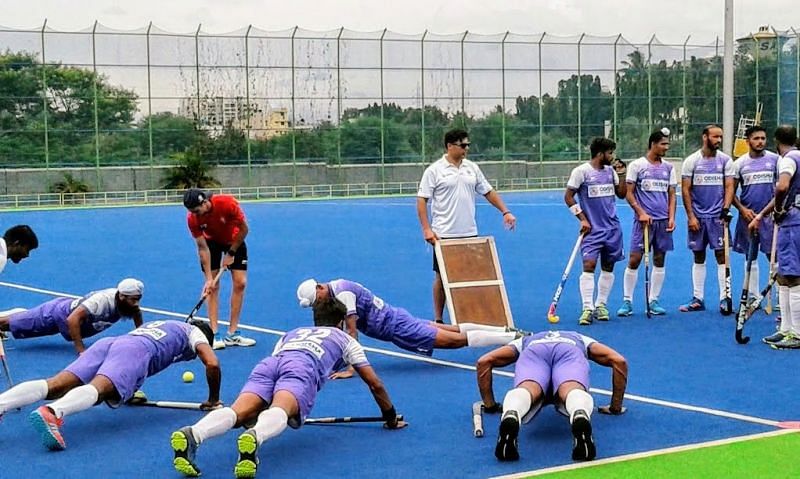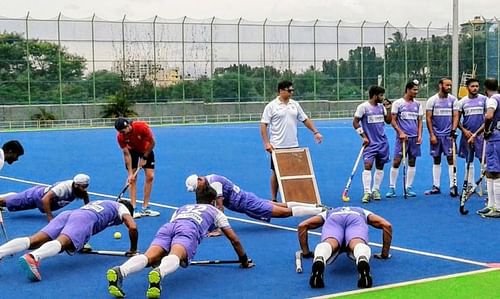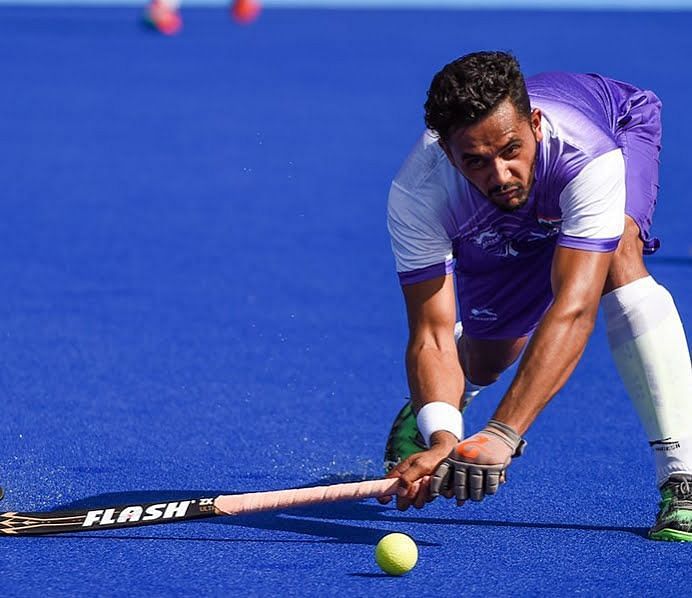
Champions Trophy Hockey 2018: 'India need more speed and variations in our PCs' says analytical coach Chris Ciriello

Winning a gold (or even a lesser medal for that matter) is something that every athlete aspires for at the international level, but while a few are fortunate enough to acquire one, for most others the elusive dream is never realized.
Ask any Indian hockey player who has donned national colors, over the last three decades or so, what they regret the most and the likely answer will be the team's inability to win a gold medal in a major international tournament. Consider then, what it must be like for one player to have won gold medals in three of the biggest competitions on offer in the world of hockey.
The fearsome defender from Australia has been part of the team that won the Olympic gold in 2012, the World Cup in 2014, and the Champions Trophy in 2012 and 2016.
As if that wasn't enough, he was also part of Australia's triumphant campaign in the Commonwealth Games in 2010 and 2014. He has worked under Ric Charlesworth, one of best hockey coaches in modern history for a good six years who he describes as a smart man and always good to have a chat with.
The Aussie champion who scored incredible PC hattricks in two big finals in 2014 to power his team to victory in the World Cup and the Commonwealth Games cherishes his Indian roots and that is precisely why he has chosen to mentor the Indian team.
The kookaburras and the Anglo-Indian connection
"My mum was born in Calcutta" (now Kolkata) declares Chris Ciriello with a sense of pride that is quite unmistakable. Chris cooked up a sumptuous spread for the Indian team as part of a challenge during a practice match at the SAI camp where the losing team had to cook for the winning team.
"My mum is a fine-dining chef," Chris told us leaving no room for doubt as to where his culinary skills emanate from. Genetics has played a distinct part in the other, and the more well renowned of Chris' skills, as his father was a hockey player and his grandfather played for India before moving to Australia.
Rudolph Pacheco wasn't the only one to have made the move, and players of Indian origin were the ones who first sowed the seeds of hockey Down Under in the 1950s and 1960s. A huge number of players who won gold for India from the 1920s to the 1950s were of Anglo-Indian descent. Broome Penniger and Leslie Hammond played alongside Dhyan Chand, the legend. Richard Allen was one of India's best goalkeepers of all time and a three-time Olympian.
When a large number of the Anglo-Indian community moved to Australia in the post-independence era, they continued playing the sport they loved in a new land - and for a new country.
More than half a century later, one of the greatest Aussie players of recent times has decided to help improve hockey in the land where his ancestors were born and bred.
Can India beat Australia at Breda?
India tops the points table at Breda having won both their opening encounters against Pakistan and Argentina. Next up, will be the toughest test of all as India will play World Champions Australia on Wednesday.
When veteran Sardar Singh led a team of fledgelings against Mark Knowles' World Champions in the Sultan Azlan Shah Cup in March this year, the Aussies registered their 81st win against India. Ramandeep Singh scored twice and the young Indians fought valiantly before going down 2-4.
As part of a rivalry dating back to the 1960s, the two sides have met just over 120 times thus far, yet India has managed to win just over 20 times.
No side in the world has dominated world hockey quite like the Kookaburras have. Australia has been part of the Champions Trophy 35 times out of the 36 editions played thus far. They have registered a top-three finish 28 times, winning 14 gold, 10 silver, and 4 bronze.
The Aussies have won the Azlan Shah Cup a record ten times, the Commonwealth Games six times in succession (1998, 2002, 2006, 2010, 2014, 2016), and the World Cup thrice (with ten podium finishes in total).
Ciriello played the last edition of the Champions Trophy for Australia when the kookaburras beat India in the final following a penalty shoot-out. A couple of years later, he finds himself in the opposite camp. So, how does the Aussie coach rate India's chances against the kookaburras?
Sportskeeda caught up with the master drag-flicker to discuss with him the art of drag-flicking, how the Aussies percieved India in his playing days, his association with Ric Charlesworth and the undeniable India connect.
Sportskeeda: How has the journey been so far in the Indian camp and when did you first start coaching?
Chris: The journey has definitely been satisfying, They are a really good bunch of guys. They ask a lot of questions too and that is important. We have just got to keep improving bit by bit.
I started coaching when I was 12. I then had a private school team in Victoria in Melbourne. I have also run a coaching academy for 8 years now. I have coached for a long time. It has always been on the side when I was playing. Even during the Olympics in 2016, and in 2015, I was coaching a woman's team and also a first-division men's team.
I have had a long association with Indian players like Sardar, Sreejesh, and Sunil, and also interact a lot with youngsters like Sumit and Jarmanpreet.
Sportskeeda: How was India perceived as a team during your playing days as opposed to other hockey greats like Germany?
Chris: Germany is a lot more tactical and technical in the way they pass, trap the ball and shoot the ball. They are a lot more measured.
India is a lot more creative, more free-flowing hockey is what they play. We had a tough time against India because no matter what, the guys are super fit and they run all day. It was physically hard and every chance you have against India, you try to make it count because otherwise, it becomes more difficult if you're behind.

Sportskeeda: When you joined the Indian camp most people were hoping for an instant transformation in the way our boys take their PCs. How difficult is it to pass on a skill as a coach?
Chris: It is not as much as difficult as everyone thinks, I suppose. We have some very good flickers but the problem is, when you have done something well, everyone expects you to do the same thing over and over again. Unfortunately, all the teams watch the drag-flickers of every other country very closely just as I do myself.
For example, for someone like Harmanpreet, over the last 5 tournaments or so, you can have access to every video. So, you can then actually have someone sort out how many flicks he has had, where he has flicked predominantly, and where he has scored. So, I do that to the opposition, and other countries will do that to our drag-flickers as well.
The most important thing is that we need to become unpredictable but most of the time, we are too predictable. It is human nature, under pressure, you go back to doing what you are most comfortable doing. So, we do need to have more variety. We do need a bit more speed as well as some variations.
Sportskeeda: You have had a long association with Ric Charlesworth. Tell us a bit about how the experience was?
Chris: I spent more than 6 years under Ric. He would always challenge the players. He would always work out the best way to get the best out of every person. Every person would react differently to him, the way he would speak to them, so that was always interesting. He always looked to the one per cent of small things that would improve the team and improve the individual.
He was a very smart man, always good to have a chat with someone who had different views on many issues.
Sportskeeda: How would you rate India's chances against the top-four in the world?
Chris: Anyone on any given day, in the top 8 in the world, can beat each other. We have been working with psychologists as well and going through with team building exercises. The players have been doing a lot of communicating as well as working under pressure.
Australia has had what I call a change of guard recently with Mark Knowles having retired. so, it will be interesting to see how they make up his absence.
Sportskeeda: Can you describe for us how the players on the pitch take a PC. Who decides whether it will be a variation or not, or what variation will be used?
Chris: A couple of them are decided in the pre-game meetings and one at the point of attack. Once the PC is actually taken, we have the video, so the video gets transported to the bench. The coaches will then assess how best the next PC can be taken
It is not just the flick, it is also the push and the hit. We have had to work on the trap and the push. The push is 33% but if it is not taken properly (not straight or bouncing), then the other 67% does not matter. Its, 33% for the push, 33% for the trap and 34% for the flick. The more issues you have with the push and the trap, the guy who is flicking does not get a chance. We are trying to work on the full package.